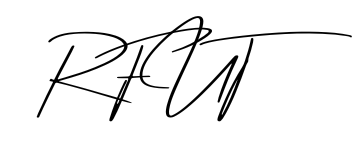In today’s fast-evolving digital landscape, organizations are rapidly adopting cloud environments to scale operations, reduce costs, and improve agility. However, this shift introduces new security challenges that traditional on-premises models cannot address. That’s where cloud security architecture steps in.
This article will walk you through what cloud security architecture is, how to implement it using five fundamental principles of security architecture, and the best tools you can use to build a secure, scalable cloud environment.
What is Cloud Security Architecture?
Cloud security architecture is the framework of policies, technologies, and controls designed to protect data, applications, and infrastructure in cloud computing environments. It ensures confidentiality, integrity, availability, and compliance across hybrid, public, private, or multi-cloud setups.
Rather than a single product or service, cloud security architecture is a layered, strategic approach that involves:
- Defining security controls at every layer (network, data, application, identity)
- Enforcing access and identity management
- Encrypting data in transit and at rest
- Monitoring threats and vulnerabilities continuously
- Aligning with compliance standards like GDPR, HIPAA, or ISO/IEC 27001
Why Cloud Security Architecture Matters
Here’s why investing in robust security architecture is no longer optional:
- Rising Threat Landscape: From ransomware to API abuse, cloud assets are under constant attack.
- Complex Environments: Hybrid and multi-cloud environments increase complexity and attack surfaces.
- Regulatory Pressure: Organizations must comply with security regulations or face heavy penalties.
- Shared Responsibility: In the cloud, security is a shared responsibility between the provider and the customer.
Cloud security architecture is the backbone that holds all these components together securely and efficiently.
The Five Principles of Security Architecture
To effectively implement cloud security architecture, organizations must align their strategy with these five fundamental principles of security architecture:
1. Zero Trust Model
The Zero Trust model is based on “never trust, always verify.” It assumes that no user or device, inside or outside the network, should be trusted by default.
How to Implement:
- Use multi-factor authentication (MFA) and role-based access control (RBAC)
- Segment networks and isolate workloads
- Continuously monitor and validate users and endpoints
- Apply least privilege access to all users and services
Tools to Use:
- Microsoft Entra ID (Azure AD) for identity management
- Okta for access control and SSO
- Zscaler Zero Trust Exchange
2. Defense in Depth
This principle involves building multiple layers of security controls across your cloud infrastructure to reduce the risk of a single point of failure.
How to Implement:
- Encrypt data at rest and in transit
- Use firewalls, WAFs, and intrusion detection systems
- Implement endpoint protection and DLP (data loss prevention)
- Secure APIs using tokens and gateways
Tools to Use:
- AWS WAF and Azure Firewall
- CrowdStrike Falcon for endpoint detection
- Fortinet FortiGate for network security
3. Least Privilege Access
Limit user and system access to only what’s necessary for their function. This reduces the blast radius in case of a breach.
How to Implement:
- Define IAM policies for all resources
- Use Just-In-Time (JIT) access for critical roles
- Audit permissions regularly and remove unused privileges
Tools to Use:
- AWS IAM and Azure RBAC
- HashiCorp Vault for secrets management
- CyberArk for privileged access management (PAM)
4. Security by Design
Security should be baked into your architecture, not added as an afterthought. This includes secure coding practices, infrastructure as code (IaC), and automated security testing.
How to Implement:
- Embed security in your CI/CD pipelines
- Use IaC tools like Terraform with security modules
- Conduct regular security reviews and code analysis
Tools to Use:
- Snyk for code vulnerability scanning
- Checkov for IaC scanning
- Palo Alto Prisma Cloud for cloud security posture management (CSPM)
5. Continuous Monitoring and Feedback
A secure architecture must constantly evolve. This principle emphasizes logging, monitoring, and real-time alerting for threat detection and incident response.
How to Implement:
- Centralize logs using SIEM platforms
- Set up cloud-native monitoring tools
- Automate alerting and response workflows
Tools to Use:
- Microsoft Sentinel or Splunk for SIEM
- AWS CloudTrail and Azure Monitor
- PagerDuty or Opsgenie for incident management
Implementation Roadmap: Security Architecture in Action
Here’s a practical roadmap to help implement cloud security architecture using these five principles:
Step 1: Assess Your Current Environment
- Conduct a risk assessment
- Identify crown jewels (critical assets)
- Map out your current cloud architecture
Step 2: Define a Cloud Security Strategy
- Align with business goals and compliance standards
- Establish a cloud security policy
- Determine shared responsibility with cloud providers
Step 3: Apply Security Principles
- Implement Zero Trust, Defense in Depth, and Least Privilege
- Secure identities, workloads, data, and infrastructure
- Integrate DevSecOps into development pipelines
Step 4: Select the Right Tools
Choose best-in-class tools for:
- Identity and access management
- Threat detection and response
- Security compliance and auditing
Step 5: Monitor and Evolve
- Continuously monitor logs and alerts
- Regularly test your environment with red teaming or penetration tests
- Update controls based on threat intelligence and business changes
Top Security Architecture Tools for Cloud Environments
To successfully implement and maintain a strong cloud security architecture, consider integrating the following tools across your cloud estate:
| Functionality | Tools |
|---|---|
| IAM | Microsoft Entra ID, AWS IAM, Okta |
| WAF/Firewall | AWS WAF, Azure Firewall, Cloudflare |
| SIEM | Microsoft Sentinel, Splunk, LogRhythm |
| Endpoint Protection | CrowdStrike Falcon, SentinelOne |
| Code Security | Snyk, Veracode, SonarQube |
| Compliance & CSPM | Prisma Cloud, Wiz, Orca Security |
| Secrets Management | HashiCorp Vault, AWS Secrets Manager |
| PAM | CyberArk, BeyondTrust |
Each tool plays a specific role in fortifying the different layers of your security architecture.
Common Pitfalls in Cloud Security Architecture
While building your architecture, avoid these common mistakes:
- Over-reliance on default settings: Cloud providers offer tools, but configuration is key.
- Shadow IT: Unapproved apps and services can bypass your architecture.
- Poor IAM hygiene: Excessive permissions and weak passwords are a recipe for disaster.
- Lack of visibility: Not all tools offer cross-cloud visibility—invest in centralized monitoring.
Conclusion: Building a Resilient Security Architecture
In an era where the cloud is central to innovation, having a resilient, layered, and principle-driven cloud security architecture is crucial. By following the five core principles—Zero Trust, Defense in Depth, Least Privilege, Security by Design, and Continuous Monitoring—you can create a scalable and secure foundation for your organization.
With the right mix of strategy, processes, and tools, you’ll not only defend against modern threats but also ensure compliance, gain customer trust, and fuel digital transformation safely.
Recommended Reading
- Cloud security
- AWS Security Best Practices (External)
- Microsoft Cloud Security Benchmark (External)
Meta Description:
Discover what cloud security architecture is, the 5 principles that guide its implementation, and the best tools for a secure cloud strategy. Learn how to build secure, scalable systems using proven frameworks.


Thanks for sharing superb informations. Your web site is so cool. I’m impressed by the details that you have on this site. It reveals how nicely you understand this subject. Bookmarked this web page, will come back for extra articles. You, my friend, ROCK! I found simply the information I already searched all over the place and just could not come across. What a great website.